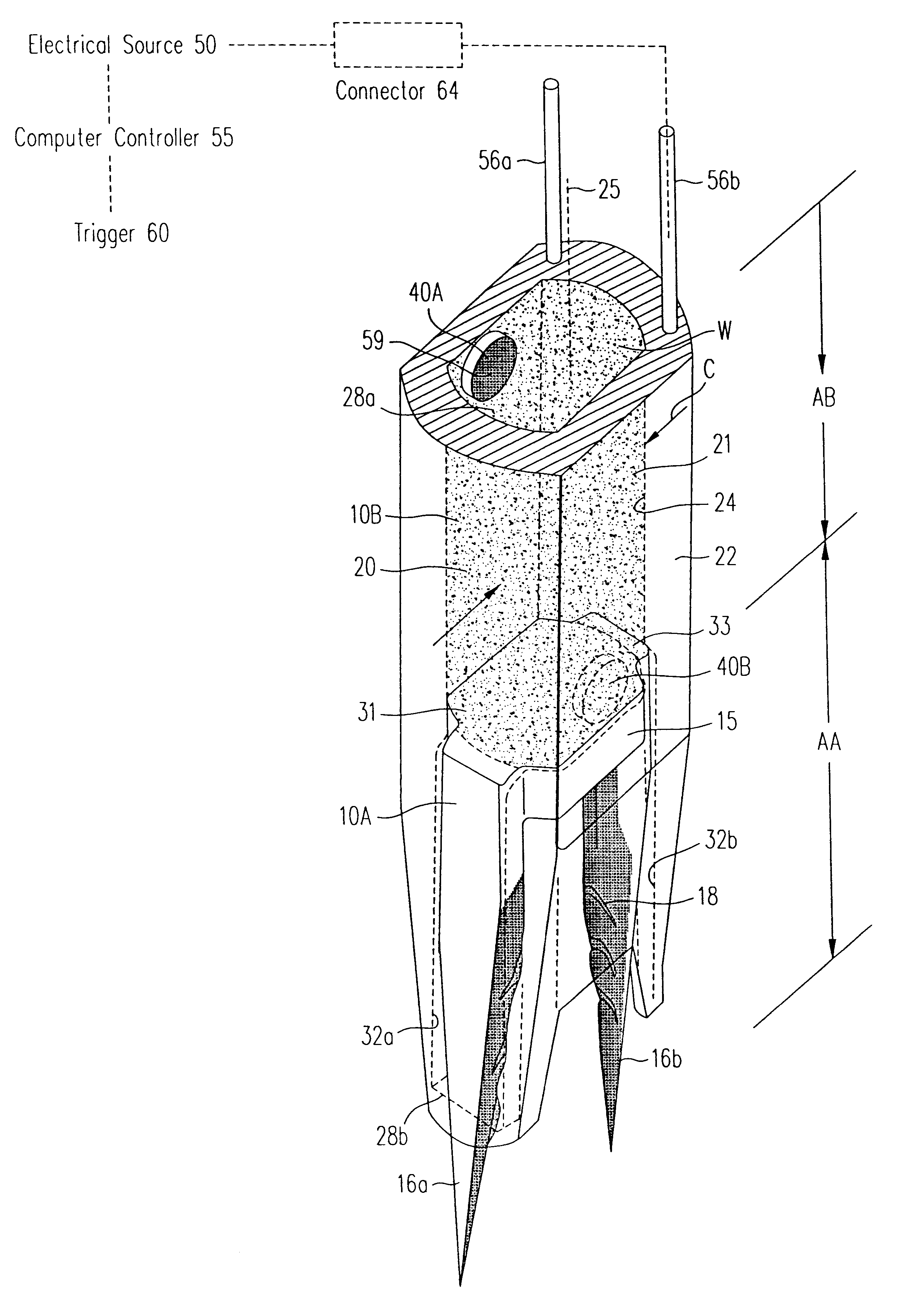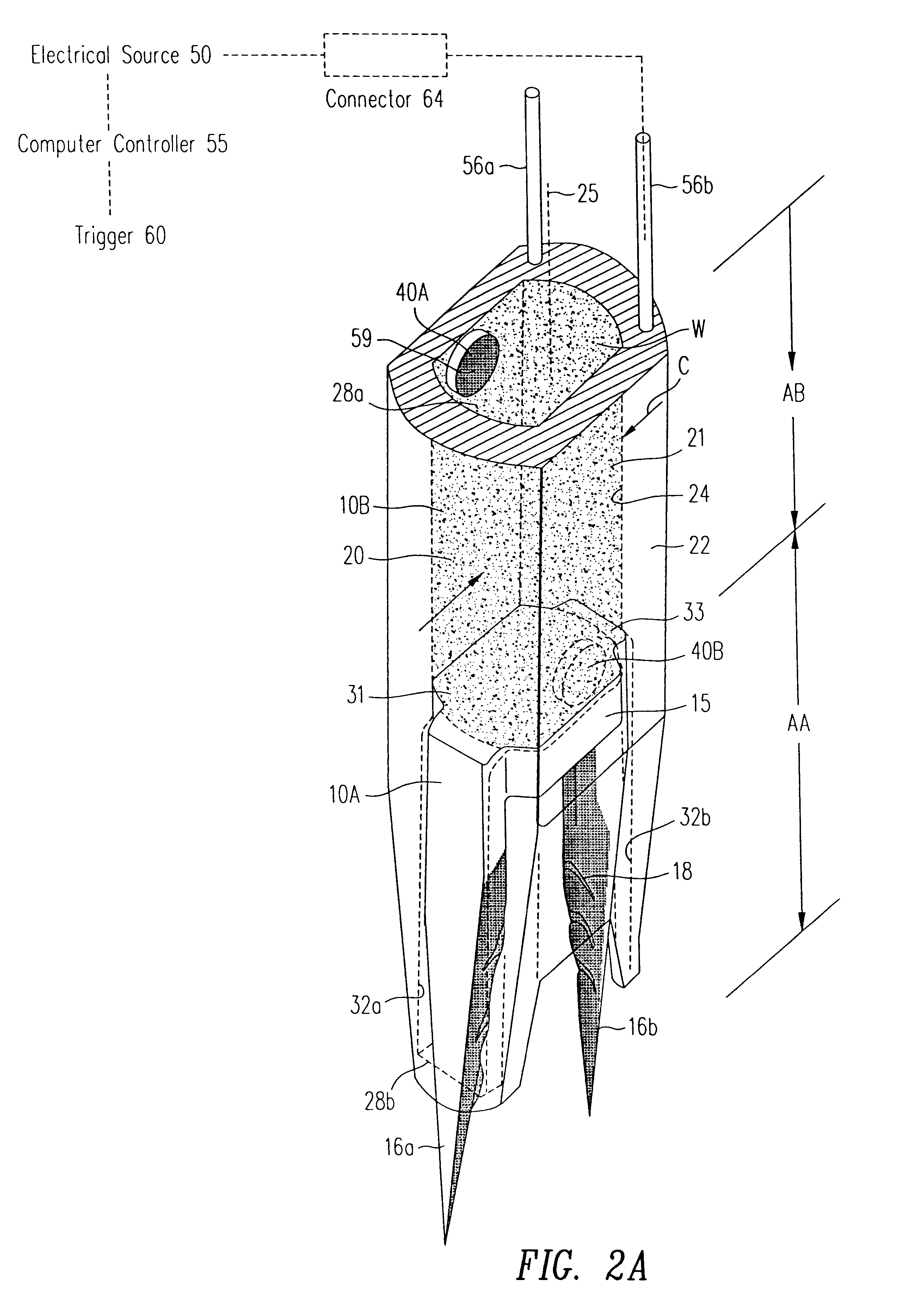Electrical discharge surgical fastener for meniscal repairs
a technology of electric discharge and meniscal repair, which is applied in the direction of surgical staples, prostheses, osteosynthesis devices, etc., can solve the problems of high cost of instruments, typical commercially available stapling systems, and financial burdens on the health care system, and achieves high momentum, inexpensive and disposable
- Summary
- Abstract
- Description
- Claims
- Application Information
AI Technical Summary
Benefits of technology
Problems solved by technology
Method used
Image
Examples
Embodiment Construction
1. Type "A" Single-Fire Electrical Discharge Fastener System. FIG. 1 shows an exemplary Type "A" single-fire fastener system 5 that is adapted for fastening tissues, sutures or other similar anatomic structures, and is particularly suited for mensical repairs. The exemplary system of FIG. 1 may be small in diameter, e.g., about 1.0 to 5.0 mm. in diameter and used for re-attaching torn meniscus portions in a common form of meniscal tear. Referring to FIGS. 2A-2B, the Type "A" embodiment of the invention provides first and second fastener system components (i.e., fastener body portions 10A and cooperating fluid chamber portion 10B). Best seen in FIG. 2B, the fastener body portion indicated at 10A has a proximal head section 15 and extending therefrom an extending section (or penetrating section) indicated at 16 that comprises at least one extending element (or penetrating leg), in this case two leg elements 16a and 16a. It should be appreciated that the number of penetrating elements ...
PUM
 Login to View More
Login to View More Abstract
Description
Claims
Application Information
 Login to View More
Login to View More - R&D
- Intellectual Property
- Life Sciences
- Materials
- Tech Scout
- Unparalleled Data Quality
- Higher Quality Content
- 60% Fewer Hallucinations
Browse by: Latest US Patents, China's latest patents, Technical Efficacy Thesaurus, Application Domain, Technology Topic, Popular Technical Reports.
© 2025 PatSnap. All rights reserved.Legal|Privacy policy|Modern Slavery Act Transparency Statement|Sitemap|About US| Contact US: help@patsnap.com



